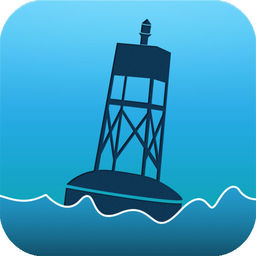
Nautical








Description
Ahoy! Whether you've got your sea legs under yeh', or you're just looking to get those toes wet, you have discovered Nautical. Nautical is a web scraper that allows its users to parse real time data from NOAA's buoys. You can try Nautical as a python or GO package! Nautical was created for research and data logging purposes, but there are many more possibilities for users to discover.
If you would like to view the python documentation follow the link to nautical's python documentation.
If you would like to view the GO documentation follow the link to nautical's GO documentation.
Table of Contents
Features
The following are a set of features and/or data that can be accessed via the package.
Sources
A source is a group of buoys. The source can be thought of as a sponsor or owner of the group/set of buoys. The source may be used as an indicator of the type of data that is stored in a buoy object.
Note: The TAO and Tsunami sources are not available in any regard.
Buoys
A buoy may contain, but are not limitted to, any of the following variables.
| Data |
Abbreviation |
Units |
| Wind Speed |
wspd |
Knots |
| Gust |
gst |
Knots |
| Wave Height |
wvht |
Feet |
| Dominant Wave Period |
dpd |
Seconds |
| Average Wave Period |
apd |
Seconds |
| Pressure |
pres |
PSI |
| Pressure Tendency |
ptdy |
PSI |
| Air Temperature |
atmp |
Fahrenheit |
| Water Temperature |
wtmp |
Fahrenheit |
| Dew Point |
dewp |
Fahrenheigt |
| Salinity |
sal |
PSU |
| Visibility |
vis |
Nautical Miles |
| Tide |
tide |
Feet |
| Swell Height |
swh |
Feet |
| Swell Wave Period |
swp |
Seconds |
| Wind Wave Height |
wwh |
Feet |
| Wind Wave Period |
wwp |
Seconds |
| Ocean Temperature |
otmp |
Fahrenheit |
| Wind Speed 10m Interval |
wspd10m |
Knots |
| Wind Speed 20m Interval |
wspd10m |
Knots |
| Depth |
depth |
Feet |
Data Caching
The cache can be used to save and load information about buoys and sources. The feature enables users to locally store and retrieve older information. NOAA refreshes the online data roughly every 30 minutes. The cache package can be used to throttle data retrieval calls to ensure the user is not wasting system resources when data has not been updated by NOAA.
- Create cache files
- Copy cache files to new names (with timestamps or custom names)
- Load Cache files to Nautical Objects.
Note: Nautical cache was added in version 3.1.0.
Prerequisites
The python package requires python>=3.6. You can use a package manager to install a version of python that satifies the requirements, or you may manually install python from the website.
The GO package requires golang>=1.18. To install go please visit the official website.
Note: The GO requirement is not strict, but previous versions have Not been tested.
Casting Off
Tutorials
Follow the link to view the tutorials for the python package.
Follow the link to view the tutorials for the go package.
Testing
Python
All python tests are located in the tests directory.
python 3.x -m venv venv
source venv/bin/activate
pip install -r requirements.txt
pip install -r test_requirements.txt
pytest --cov=tests
Note: The virtual environment and coverage are optional.
GO
All golang tests are located with the golang source in [pkg](https://gith
ub.com/barbacbd/nautical/tree/master/pkg). The following should be executed from the project home directory.
go get -u
go test -v ./...
Contributing
If you are aiming to become the first mate, second mate, deck cadet, engineer, or scallywag you have found your
way to the contributions documentation. Please continue reading if you would like to contribute or just follow along with the
development progress of the package.
Contribution Flow
Anyone may submit issues. In fact, it is encouraged that users submit issues to contribute to the success and improvement of the project.
The issues will be reviewed by the captain, and given the proper tags to assist developers. Shipmates that would like to work on pull requests, the workflow is roughly:
- Create a topic branch from where you want to base your work (usually master).
- Make commits of logical units.
- Make commit messages that clearly document the changes.
- Push your changes to a topic branch in your fork of the repository.
- Make sure the tests pass, and add any new tests as appropriate.
- Submit a pull request to the original repository.
A rough convention for commit messages that is designed to answer two
questions: what changed and why. The subject line should feature the what and
the body of the commit should describe the why.
Example:
noaa: Added XXX functionality to XXXX
** Added the XXX function to XXX to satisfy the need/
requirement for XXX.
** Additional information followed in other bullet points.
Note: It is suggested (but not required) to add the Issue number to the commit message.
Copyright
Copyright © 2022, Brent Barbachem. Released under the MIT License.